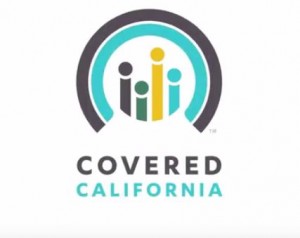 SACRAMENTO, Calif. — Covered California released a new comprehensive analysis on Tuesday detailing the financial assistance available through the Affordable Care Act as well as a preliminary analysis of how changes proposed in federal law would affect enrollees.
SACRAMENTO, Calif. — Covered California released a new comprehensive analysis on Tuesday detailing the financial assistance available through the Affordable Care Act as well as a preliminary analysis of how changes proposed in federal law would affect enrollees.
The studies come one day after the Congressional Budget Office (CBO) reported that 24 million consumers could lose coverage under the proposed American Health Care Act (AHCA), which was introduced in the U.S. House of Representatives on March 6.
“We are deeply troubled by the CBO’s finding that the amount of support provided for consumers to buy health insurance in 2020 under proposed legislation would be only 60 percent of what is provided under current law,” said Covered California Executive Director Peter V. Lee. “While we are still doing an analysis of the aggregate effects of this law on our consumers, the likely effect of basing subsidies on age alone — rather than considering income and where an individual lives — is that it will make coverage unaffordable and in many cases, put coverage out of reach.”
Covered California released two documents on Tuesday: “Bringing Health Care Coverage Within Reach,” an in-depth analysis of Covered California enrollees and the subsidies they receive in 2016; and “Preliminary Analysis of Impacts to Consumers from Changes in Premium Subsidies and Cost Sharing Reductions Available Under the Proposed American Health Care Act.”
The first analysis shows Covered California households received an average of $5,300 per year in tax credits to help pay for the cost of their coverage in 2016. Additionally, 12 percent of Covered California households receive more than $10,000 per year and 16 percent of individuals receive more than $6,000 per year to help bring health care coverage within reach.
Approximately half of Covered California consumers are enrolled in “Enhanced Silver” plans, which give them the additional benefit of cost-sharing reductions that reduce their out-of-pocket expenses by an average of $1,500 per year.
“Health insurance can be expensive, and the financial assistance provided through Covered California helps consumers save money and brings that coverage within reach of millions,” Lee said. “As policy makers in Washington consider changes to our health care system, it is important that the impact on real individuals informs the debate in Washington, D.C. because we are seeing that many will be priced out of needed coverage.”
While the average effects are relatively clear and consistent with the CBO’s assessment that “the average subsidy under the legislation would be about 60 percent of the average subsidy under current law,” the effect on individuals in California and nationally will vary greatly.
The examples below compare the financial help that consumers receive now through the Affordable Care Act — which considers a consumer’s age, income, family size and where they live — to the newly proposed age-based-only subsidies of the AHCA. For example, under the age-based subsidy structure, consumers purchasing the second-lowest Silver plan would fare very differently depending on whether they live in Los Angeles or San Francisco:
- In Los Angeles, a 27-year-old earning $17,000 a year would see similar net premiums: $55 per month under the proposed law compared to $52 per month under the current law. However, if that same individual lived in San Francisco, his or her new net premium would be four times higher — $199 per month — compared to $52 per month under the current law.
- In Los Angeles, a 62-year-old earning $30,000 a year would see his or her net premium increase from $207 per month under the current law to $275 per month under the proposed law. If that person lived in San Francisco, his or her net premium would jump threefold from $209 per month to $668 per month.
“As many independent studies have shown, moving to age-based tax credits will hurt many of our consumers, particularly those older and lower- to middle-income consumers, and price them out of the market,” Lee said. “This would damage our risk mix and lead to higher premiums for everyone in the individual market, even those who do not purchase their insurance through Covered California.”
Covered California plans to conduct further analysis of the overall impact of proposed changes including all provisions contained in the American Health Care Act.
The county data used to prepare today’s analysis can be found here: http://hbex.coveredca.com/data-research/library/County_APTC_CSR_data.pdf.
This is the latest analysis performed by Covered California that details how consumers are benefitting from the Affordable Care Act. Previous analyses include “Consumer and Market Implications of Affordable Care Act Repeal Without a Viable Replacement” and “Covered California Brings Health Care Within Reach and Shows How Consumers Can Save by Shopping.”
Now that open enrollment has ended, Covered California is focused on its special-enrollment period. Consumers are eligible to sign up now if they experience changes in their life circumstances, such as losing their health care coverage, getting married, having a child or moving.
For more information on special-enrollment rules, visit: www.CoveredCA.com/individuals-and-families/getting-covered/special-enrollment.
Consumers who qualify for Medi-Cal may enroll through Covered California year round.
For more information, consumers should visit CoveredCA.com, where they can enroll online or get information about obtaining free, confidential in-person assistance in a variety of languages. They can find a certified enroller at a storefront in their area or have a certified enroller contact them through the “Help on Demand” feature.
Consumers can also enroll over the phone by calling Covered California at (800) 300-1506.











